| Author |
Message |
GJK2010

Newbie

Joined: 07/10/2010
Location: United StatesPosts: 17 |
| Posted: 05:44pm 01 Oct 2011 |
 Copy link to clipboard Copy link to clipboard |
 Print this post |
|
Hello
Does anyone here have a floor model drill press? Is what I have is a Sanchin drill press and the table evelator bracket that rides on the main column, that bracket broke and I would like to know if anyone could help me by measuring the colunm's so maybe I can find one that may work for my press. The colunm needs to be 2.441".
Thanks,
Gary
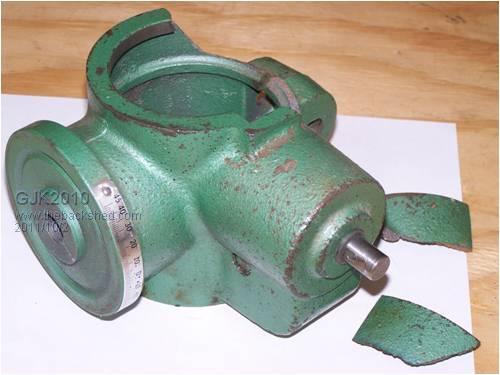
|
| |
VK4AYQ
Guru

Joined: 02/12/2009
Location: AustraliaPosts: 2539 |
| Posted: 01:14am 02 Oct 2011 |
 Copy link to clipboard Copy link to clipboard |
 Print this post |
|
Hi gary
You could get that one brazed back together and re machine the column hole as it doesn't seem to badly broken.
Bob
Foolin Around |
| |
GJK2010

Newbie

Joined: 07/10/2010
Location: United StatesPosts: 17 |
| Posted: 11:59pm 02 Oct 2011 |
 Copy link to clipboard Copy link to clipboard |
 Print this post |
|
Bob,
Think braze would be strong enough? Im not too sure.. I thought about maybe welding but not so sure. Some guys say heating the object up to 500 Deg. weld it then put it back in the oven for a while then slowly lower the heat by 100 Deg. until cool enough to handle. Guess I never done it before so maybe i'll try the welding process first. Just worried that its gonna cause iron in-brittlement.....only one way to find out Right 
Take care
Gary |
| |
VK4AYQ
Guru

Joined: 02/12/2009
Location: AustraliaPosts: 2539 |
| Posted: 12:21am 03 Oct 2011 |
 Copy link to clipboard Copy link to clipboard |
 Print this post |
|
Hi gary
In my experience brazing has a better bond than welding as the cast iron in these Chinese machines is very low quality and does not take arc welding well, even with all the preheat and special rods, Just to buy the correct rods will cost heaps.
With brazing you can build a fillet to reinforce the weld and get a greater surface area of brass contact, preheat is still important, I used a small gas burner on an old stove and preheat till when you sprinkle Borax (Flux) on the weld it melts and goes glassy, cool slowly by turning the gas right down, Use an old saucepan inverted over the piece to prevent the wind cooling the piece to quickly.
All the best
Bob
Foolin Around |
| |
Bryan1

Guru

Joined: 22/02/2006
Location: AustraliaPosts: 1344 |
| Posted: 02:08am 03 Oct 2011 |
 Copy link to clipboard Copy link to clipboard |
 Print this post |
|
Hi Gary,
If you can your hands on some 309 welding rods they will weld the cast iron but you must pre heat the unit to about 200C first, then after each weld ping the weld with a chipping hammer for a few minutes before the next weld. It may pay to practice on some scrap first but I have used this method on many occasions with success every time.
Regards Bryan |
| |
yahoo2

Guru

Joined: 05/04/2011
Location: AustraliaPosts: 1166 |
| Posted: 06:54am 03 Oct 2011 |
 Copy link to clipboard Copy link to clipboard |
 Print this post |
|
gary,
What you have said is correct ....technically.
A cast iron brazing weld is softer than cast but only if you grind the piece back to its original size, if you are prepared to weld beyond the crack and leave a large ridge the finished product will be far stronger.
If you fix the reason it broke that will lessen the chances of it happening again, my guess is the slot at the back filled up with crud stopping the bolt from clamping the post tightly, you can probably guess how i know that, Im not admitting anything.
It looks from the pic that the ring inside where its parted doesn't touch the post that gives more area to build up weld.
brazing is fairly forgiving you are not melting the cast like stick welding, so the grey graphite flakes in the cast don't form the white brittle crystals, you use the flux and heat to 'wet' in front of the braze this forms the bond.
some tips
practice on some scrap, grind a few slots and weld them up, exhaust manifold is not suitable nor is cast with a dark grey structure, carbon and graphite will smear into the ground surface and contaminate the weld bond, they need a different technique to clean and weld.
Vee the crack out but leave a thin strip in the centre so the pieces will still fit together and line up. grind the surface clean around the vee maybe even trim some casting back to make room for the braze.There is a couple of tricky shapes in there!
grease or oil on the part will burn and the smoke will contaminate the surface and ruin the weld.
big multi-grips and wedges.you will need to reposition it probably 30 times. It needs to be level across the crack and about 30 degrees uphill in the direction you weld so you can puddle up the braze behind the wetting flux.
Leather gloves will burst into flames when handling the part.
slow cooling
I wouldnt worry about it too much, if you are keen get a bag of vermiculite from the garden centre, put half of it in a metal drum, place the hot part on top and cover it with the rest, stick the lid on and leave it for a day.
cast filler rod or electrode welding may need slow cooling. i keep it hot with a diesel burner while I am working and for 20 minutes after, then drop it in the vermiculite bucket.
Heres a couple of photos of stuff that has stood the test of time and broken most of the rules
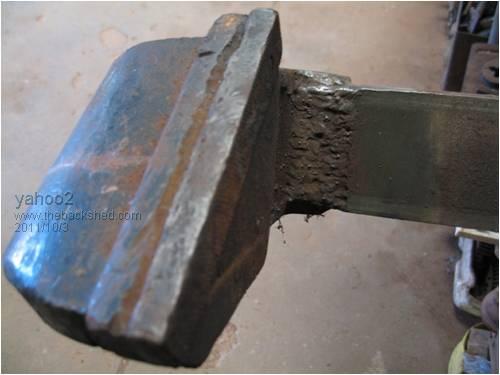
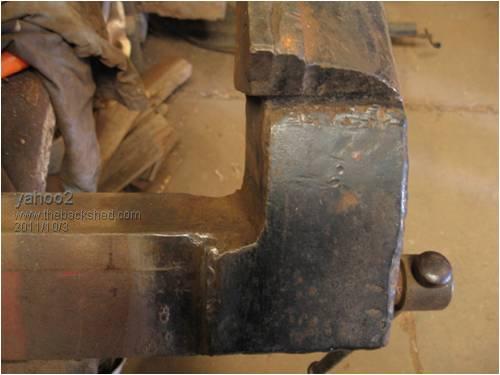
this was arc cast weld with steel plates welded to the sides I was a school so 30+ years ago
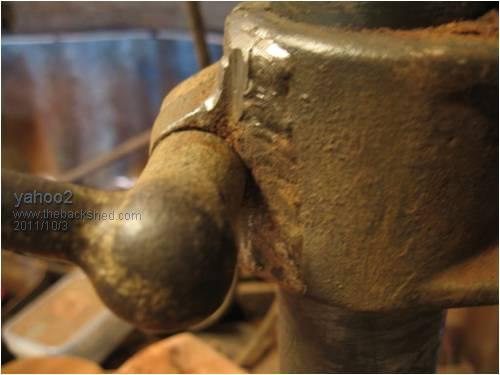
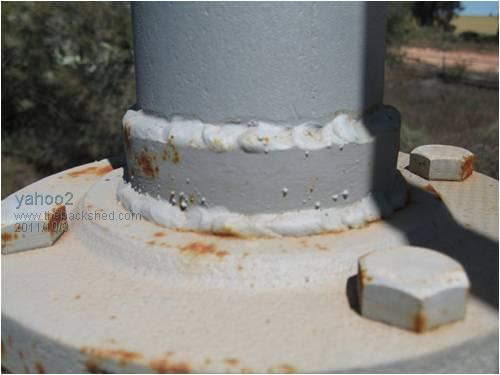
This is zinc coated steel to sh#t cast done with a mig welder and standard steel wire (not recommended) it holds a 4 metre satellite dish.there are cracks but it will handle about 5 tonne side load, the test one did anyway.
I'm confused, no wait... maybe I'm not... |
| |
GJK2010

Newbie

Joined: 07/10/2010
Location: United StatesPosts: 17 |
| Posted: 05:20pm 03 Oct 2011 |
 Copy link to clipboard Copy link to clipboard |
 Print this post |
|
Thanks,
Everyone who responded.. I'll Probally will end- up brazing this part. And if it holds up great if not than prob weld it.. Thanks again
take care.
Gary |
| |

